Topic 3-Voice of the Genome
1/102
There's no tags or description
Looks like no tags are added yet.
Name | Mastery | Learn | Test | Matching | Spaced |
|---|
No study sessions yet.
103 Terms
What are all living things made up of?
Cells
What are eukaryotic cells?
They’re complex and include animal and plant cells
What are prokaryotic cells?
They’re smaller and simpler and include bacteria
What are organelles?
They’re parts of cells. Each one having a specific function.
What is cell ultrastructure?
The internal structure of cells that are not visible through a light microscope
What organelles do animal (eukaryotic) cells have?
-cell surface membrane
-rough endoplasmic reticulum
-nucleolus
-centriole
-nucleus
-smooth endoplasmic reticulum
-lysosome
-ribosome
-nuclear envelope
-Golgi apparatus
-cytoplasm
-mitochondria
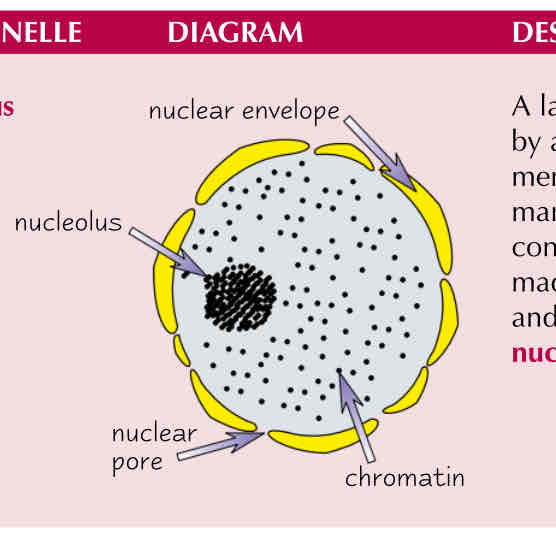
Describe the nucleus
-surrounded by a nuclear envelope (double membrane) containing pores
-contains chromatin and the nucleolus
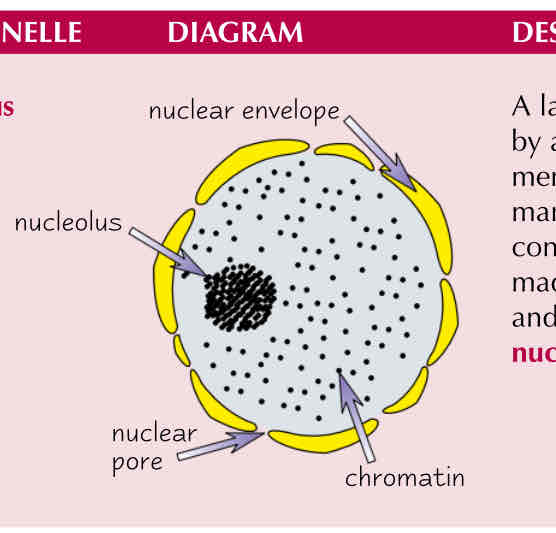
Describe the function of the nucleus
-controls the cells activities by controlling transcription
-DNA contains instructions to make proteins
-pores allow substances to move between the nucleus and the cytoplasm
-nucleolus makes ribosomes
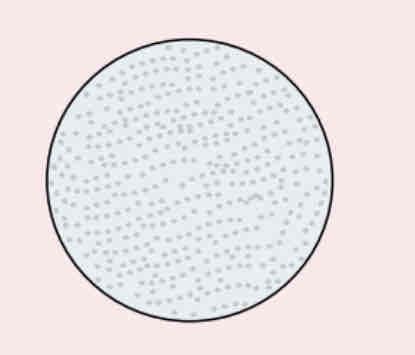
Describe the lysosome
-round organelle
-surrounded by a membrane
-no clear internal structure
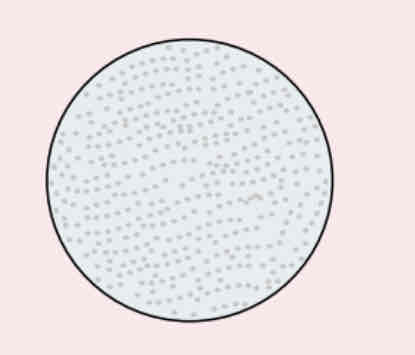
Describe the function of the lysosome
-contains digestive enzymes
-used to digest invading cells or to break down worn out components of the cell
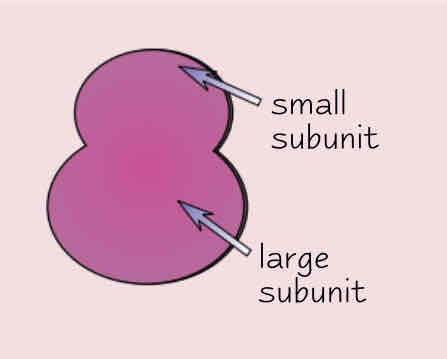
Describe the ribosome
-very small
-floats free in the cytoplasm or is attached to the rough endoplasmic reticulum
-made of proteins and RNA
-not surrounded by a membrane
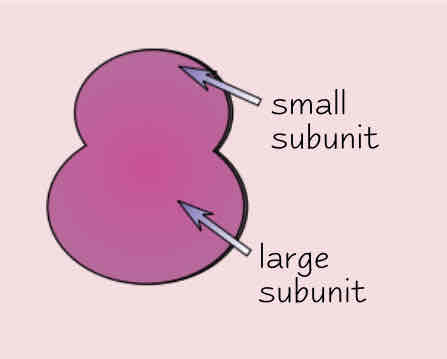
Describe the function of the ribosome
-where proteins are made
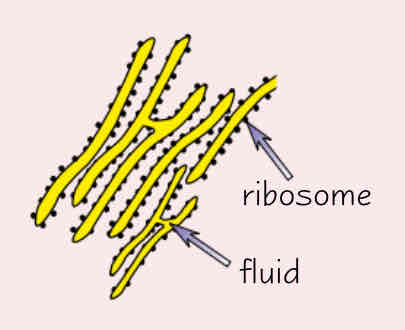
Describe the rough endoplasmic reticulum
-system of membranes enclosing a fluid filled space
-c surface covered with ribosomes
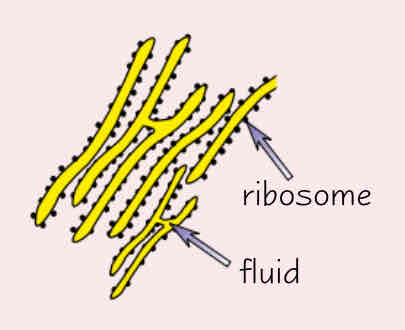
Describe the function of rough endoplasmic reticulum
-folds and processes proteins that have been made at the ribosomes
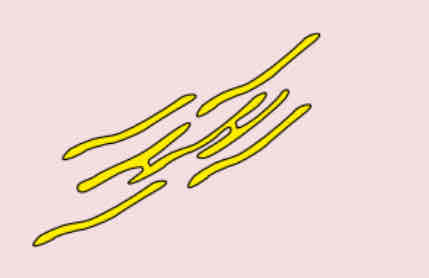
Describe the smooth endoplasmic reticulum
-has no ribosomes
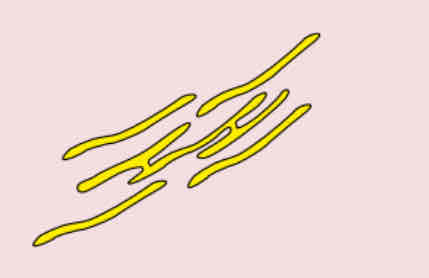
Describe the purpose of the smooth endoplasmic reticulum
-synthesises and processes lipids
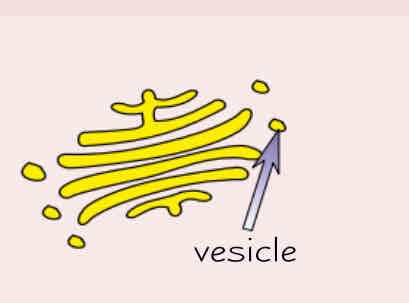
Describe the Golgi apparatus
-group of fluid filled membrane bound flattened sacs
-vesicles are seen at the edges of the sacs
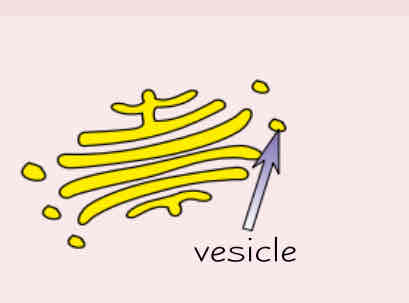
Describe the function of Golgi apparatus
-processes and packages new lipids and proteins
-makes lysosomes
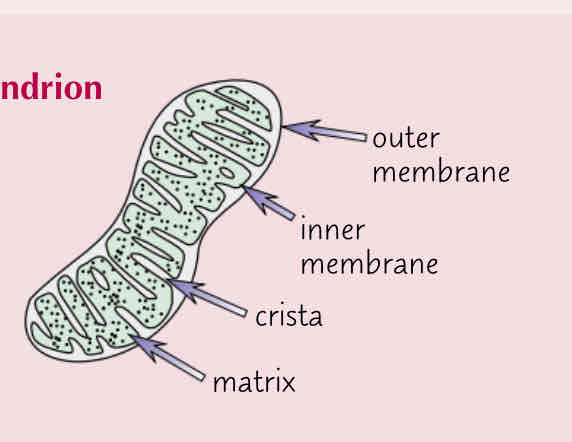
Describe the mitochondrion
-oval shaped
-double membrane
-inner layer of folded to form cristae
-the matrix contains enzymes involved in respiration
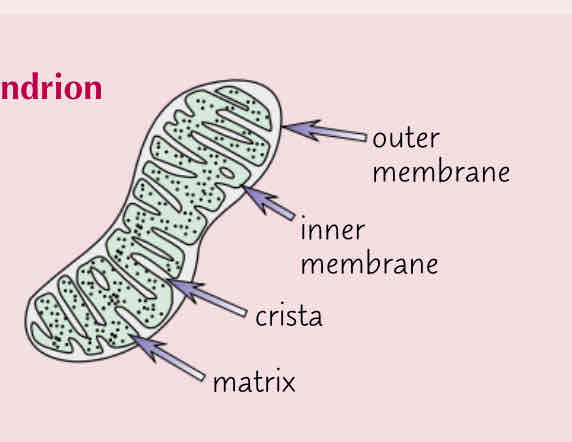
Describe the function of the mitochondrion
-site of aerobic respiration where ATP is produced
-found in cells that are active and require a lot of energy
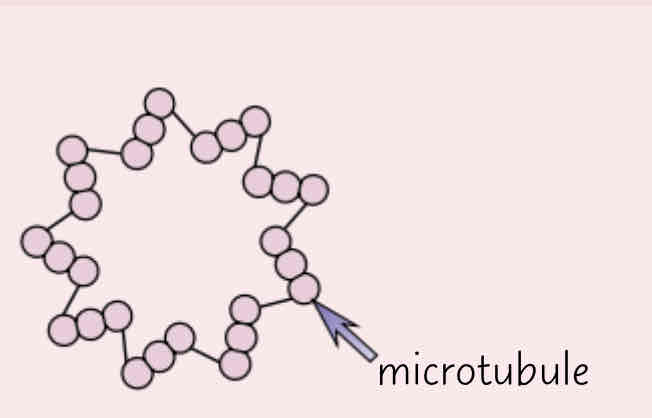
Describe the centriole
-small, hollow cylinders made of microtubules
-found in animal cells and only some plant cells
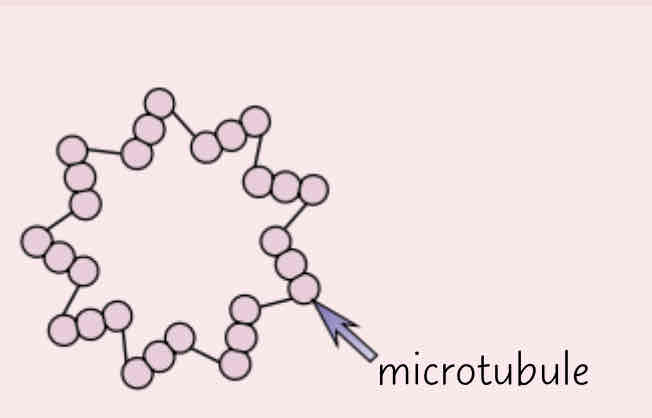
Describe the function of the centriole
-involved with the separation of chromosomes during cell division
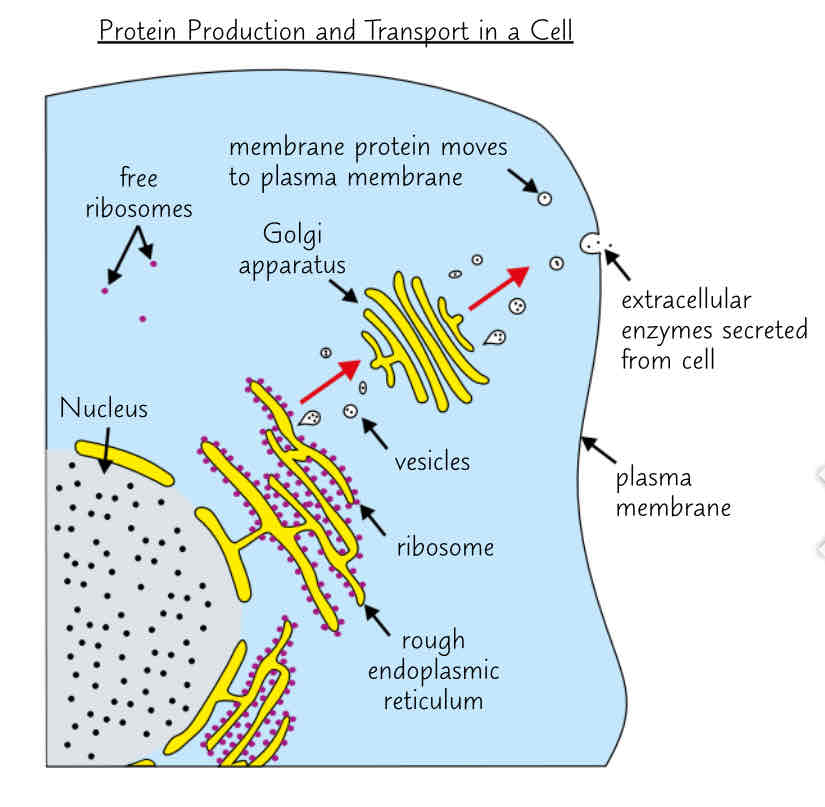
Describe how the rough endoplasmic reticulum and Golgi apparatus are involved in proteins production and transport
A region of DNA corresponding to a gene is transcribed in the nucleus, producing mRNA
mRNA binds a ribosome on the RER and is translated, producing a polypeptide that adopts its tertiary structure in the RER
A transport vesicle containing the protein pinches off the RER and fuses with the Golgi apparatus
In the Golgi, the protein is modified and packaged into a secretory vesicle that moves to and fuses with its destination
For example a secreted protein (such as an antibody or extracellular enzyme) will be in a vesicle that will undergo exocytosis
How prokaryotic cells organelle slightly different than eukaryotic cells?
-cytoplasm lacks membrane bound organelles
-ribosomes are smaller
-have a single bacterial chromosome
-has a cell wall containing glycoprotein Murien/peptidoglycan
What additional structures do prokaryotic cells have?
-plasmids
-capsules
-flagella
-pili
-mesosomes
What is the purpose of plasmids?
-small loops of DNA that are separate from the main circular DNA molecule
-contains genes that can be passed between prokaryotes
Describe the purpose of capsules
-surrounded by outer layer
-helps protect bacteria from drying out and from attack by cells of the immune system of the host organism
What a the purpose of the flagellum
-long, hair like structure that rotates enabling the prokaryote to move
What is the purpose of the pili?
-thread like structures
-enable bacteria to attach to other cells or surfaces
Describe the purpose of mesosomes
-infolded regions in the plasma membrane of some prokaryotic cells
-aerobic respiration, cell wall formation and DNA replication
Describe the purpose of circular DNA
-single circular strand of genetic material not contained in a membrane bound nucleus
-this molecule is found in the nucleoid
Describe the purpose of ribosomes
-smaller than eukaryotic ribosomes-70S
-site of protein synthesis
What are gametes?
Sex cells
What does fertilisation form?
Zygote
How many chromosomes are in one gamete?
23
What does fertilisation describe?
The exact moment when the nuclei of the male and female gametes fuse
What does combining genetic materials from two individuals form?
Genetically unique offspring
What do egg and sperm cells have the same organelles as?
Eukaryotic cells
Describe how the egg cell is specialised for its function
-Haploid nuclear
-cell plasma membrane
-follicle cells=form a protective coating
-zona pellucida=forms an impenetrable barrier after fertilisation, preventing other sperm from entering the cell
-lipid droplets
-contains food to provide energy for the dividing zygote
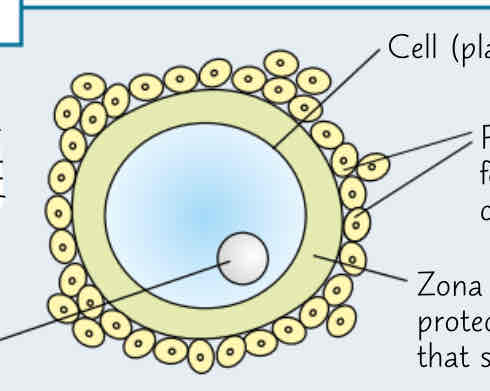
Describe how the sperm cell is specialised for its function
-haploid nucleus
-cell plasma membrane
-acrosome=contains digestive enzymes to break down the eggs zona pellucida and enable to sperm to penetrate the egg
-mitochondria=provide energy for tail movement
-flagellum=allows sperm to swim towards egg cell

Where does fertilisation in mammals occur?
Oviduct
Describe the process of fertilisation
Sperm reaches ovum attracted by chemicals released by ovum and the chemical released from the follicle cells trigger the acrosome reaction
Acrosome membrane fuses with front of sperm cell membrane. Digestive enzymes in acrosome are released by exocytosis
Digestive enzymes digest the zona pellucida. Acrosome all process forms and binds to receptors on egg cell membrane
Sperm cell membrane fuses with the ovum membrane
Sperm nucleus enters the ovum and the cortical reaction is triggered
Cortical enzymes released from the ovum cause the zona pellucida to form a tough layer which prevents entry of any other sperm and sperm binding receptors are clipped from the egg cell membrane
Nuclei of sperm and ovum fuse, the egg is fertilised and a diploid zygote is formed
What is genetic variation?
The differences that exist between individuals genetic material
Describe the crossing over of chromatids
Homologous pairs of chromosomes come together and pair up
Two of the chromatids in each homologous pair twist around each other
Twisted bits break off their original chromatid and rejoin onto the other chromatid, recombining their genetic material
chromatids still contain the same genes but they have a different combination of alleles
Meaning each of the 4 new cells formed from meiosis contains chromatids with different alleles
Describe the independent assortment of chromosomes
Four daughter cells formed from meiosis have a completely different combinations of chromosomes
All cells have a combination of chromosomes from your parents
When gametes are produced different combinations of maternal and paternal chromosomes go into each cell
Called independent assortment
What is a locus?
The position of a gene on a chromosome
What does independent assortment mean for genes with loci on different chromosomes?
They’re randomly distributed in gametes
What are genes with loci on the same chromosome said to be and why?
-linked
-because they’ll stay together during independent assortment and their alleles will be passed on to the offspring together
How do you know two genes are closely linked?
They’re closer together and crossing over is less likely to split them up
When is a characteristic said to be sex linked?
When the locus of the allele that codes for it is on a sex chromosome
Why does the Y chromosome carry fewer genes And what does this cause?
It’s smaller and causes most genes are carried on the X chromosome (X-linked)
Why are males likely to express the characteristic if it’s sex linked?
They only have one X chromosome and so only one copy of the gene so it show even if it’s recessive
What are some genetic disorders caused by faulty alleles and what chromosome are the carried on?
Colour blindness and haemophilia and they’re carried on the X chromosome (X linked disorders)
What a meiosis?
A type of cell division that occurs in reproductive organs to form gametes
Describe the process of meiosis
DNA replicates to form 2 identical copies of each chromosome, called chromatids.
DNA condenses to form double armed chromosomes, from 2 sister chromatids.
Chromosomes arrange themselves into homologous pairs.
FIRST DIVISION-homologous pairs are separated, halving the chromosome number.
SECOND DIVISION-pairs of sister chromatids are separated.
Four new daughter cells which are genetically different from each other are formed (gametes).
What does mitosis produce?
Genetically identical cells
What is mitosis needed for?
Growth
Repair
Asexual reproduction
What is the order of events in the cell cycle?
Cell growth
Interphase
Mitosis
Describe the process of Interphase
Cells DNA is unraveled and replicated, to double its genetic content
Organelles are replicated
ATP content is increased
What are the 4 stages of mitosis?
Prophase
Metaphase
Anaphase
Telophase
Describe Prophase
Chromosomes condense, getting shorter and fatter
Centrioles move to opposite poles of the cells, forming spindle fibres
Nuclear envelope breaks down and chromosomes lie free in the cytoplasm
Describe Metaphase
Chromosomes, each with 2 chromatids, line up along the equator of the cell
Spindle fibres attach to the centromere
Describe Anaphase
Centromeres divide, separating each pair of sister chromatids
Spindles contract, pulling chromatids to opposite poles of the spindle centromere first
Chromatids appear v-shaped
Describe Telophase
Chromatids reach the opposite poles of the spindle
They uncoil and become long and thin again
Nuclear envelope forms around each chromosome, so there are two nuclei
Cytoplasm divides (cytokinesis) and there are two daughter cells that are genetically identical to the original cell to each other.
Mitosis is finished and each daughter cell starts the interphase part of the cell cycle to get ready for the next round of mitosis
What are stem cells?
Unspecialised cells that can develop into other types of cells
What is differentiation?
The process of cells becoming specialised
What does potency mean?
The ability of stem cells to differentiate into specialised cells
Define Totipotency
The ability to produce all types of cells, including all specialised cells in an organism and extraembryonic cells.
Define Pluripotency
The ability of a stem cell to produce all the specialised cells in an organism, but not extraembryonic cells.
When are totipotent stem cells present?
During the first few cell divisions of an embryo
Why do stem cells become specialised?
Different genes in the DNA become active and are expressed
Describe the process of differential gene expression
Some stem cell genes aren’t expressed because they’re not active
Under the right conditions, some genes are activated and others are deactivated.
mRNA is only transcribed from active genes.
mRNA from active genes is translated into proteins.
Proteins modify the cells and determine their structure and control cell processes
Changes to the cell produced by proteins cause the cell to become specialised. Changes are difficult to reverse so the cell stays specialised.
What controls gene expression and how does it do it?
Transcription factors- proteins bind to DNA and activate or deactivate genes by increasing or decreasing the rate of transcription
What factors increase the rate of transcription and how does it do it?
Activators-help RNA polymerase bind to the DNA and begin transcription
What factors decrease the rate of transcription and how does it do this?
Repressors- work by preventing RNA polymerase from binding to DNA stopping transcription
What is an operon?
Section of DNA that contains a cluster of structural genes, that are transcribed together, as well as control elements and sometimes a regulatory gene.
What do structural genes code for?
Useful proteins like enzymes
What do control elements include?
A promoter and and operator
What does the regulatory gene code for?
An activator or repressor
What does the E.Coli bacterium respire and what does it use if there is not enough of that?
-respires glucose but can use lactose
Where are the genes that produce enzymes in order to respire glucose found?
On the lac operon
What are the 3 structural genes on the lac operon and what do they do?
-lacZ, lacY, lacA
-produce proteins that help bacteria digest lactose
Describe what happens on the lac operon when lactose is not present
-regulatory gene produces the lac repressor, which is a transcription factor that binds to the operator site when there’s no lactose present.
-this blocks transcription as RNA polymerase can’t bind to the promoter
Describe what happens of the lac operon when lactose is present
-lactose binds to the repressor, changing the repressors shape so that it can no longer bind to the operator site.
-RNA polymerase can now begin transcription of the structural genes
What is a tissue?
Group of similar cells that are specially adapted to work together to carry out a particular function.
What is an organ?
Group of different tissues that work together to perform a particular function.
What is an organ system?
Group of organs working together for a particular function.
What conditions can stem cell treatments be used for?
Spinal cord injuries
Heart disease and damage caused by heart attacks
What are the potential benefits of stem cell therapies?
Saves many lives-eg.used to grow organs
Improves the quality of life of people-eg.replacing damaged cells of people blind people
Describe adults stem cells
Obtained from body tissues eg. Bone marrow.
Little risk but lots of discomfort.
Can only differentiate into a limited range of cells.
Less risk of rejection if the stem cells are taken from the patient.
Describe embryonic stem cells
Obtained from early embryos
Embryos are created through IVF
Stem cells are removed from them and the rest are destroyed.
Can develop into all types of specialised cells.
Ethical objections of embryonic stem cells
Results in the destruction of an embryo that is viable
Embryo has a right to life
Wrong to destroy an embryo
Why do people agree with using embryonic stem cells?
People believe the embryo wouldn’t survive in the womb
Embryonic stem cells can develop into more specialised cells
Describe the work of regulatory authorities which consider the benefits and ethical issues of embryonic stem cell research
Looking at proposals of research and deciding if they should be allowed by taking ethical issues into account-ensures research is carried out for a good reason.
Licensing and monitoring centres-ensure fully trained staff carry out the research and won’t waste precious resources.
Producing guidelines and codes of practise-ensures all scientists are working in a similar manner.
Monitoring developments in scientific research and advances- ensures any changes in the field are regulated appropriately.
Providing information and advance to governments and professionals- helps promote the science involved in embryo research.
What is continuous variation?
When the individuals in a population vary within a range with no distinct categories.
What is discontinuous variation?
When there are two or more distinct categories-each individual falls into only one of these categories
Define mono genetic
Characteristics controlled by one gene
Define polygenetic
Characteristics controlled by a number of genes at different loci
Describe a characteristic that the environment impacts to produce the phenotype
Height:
Impacted by nutrition
Tall parents usually have tall children but undernourished children won’t grow to their maximum height.
How does epigenetic control work?
Attaches or removes chemical groups to or from the DNA.
This alters how easy it is for the enzymes and other proteins needed for transcription to interact with and transcribe genes.